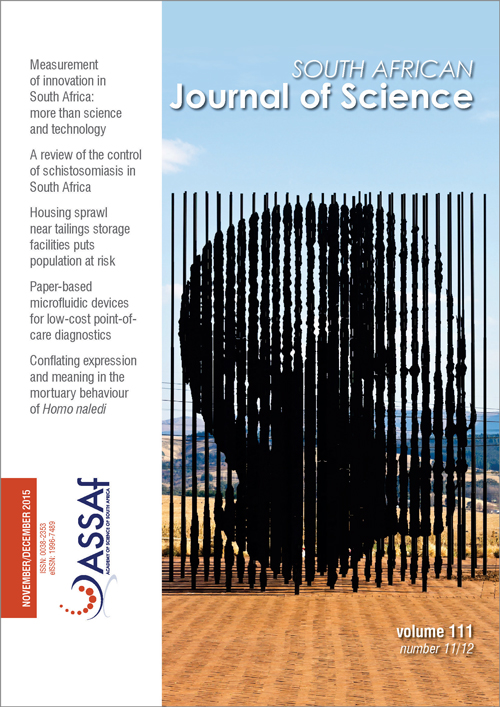Putting fossils on the map: Applying a geographical information system to heritage resources
DOI:
https://doi.org/10.17159/sajs.2015/20140371Keywords:
Spatial data, Permo-triassic, database, Karoo SupergroupAbstract
A geographical information system (GIS) database was compiled of Permo-Triassic tetrapod fossils from the Karoo Supergoup in South African museum collections. This database is the first of its kind and has great time applicability for understanding tetrapod biodiversity change though time more than 200 million years ago. Because the museum catalogues all differed in recorded information and were not compliant with field capture requirements, this information had to be standardised to a format that could be utilised for archival and research application. Our paper focuses on the processes involved in building the GIS project, capturing metadata on fossil collections and formulating future best practices. The result is a multi-layered GIS database of the tetrapod fossil record of the Beaufort Group of South Africa for use as an accurate research tool in palaeo- and geoscience research with applications for ecology, ecosystems, stratigraphy and basin development.
Published
Issue
Section
License

All articles are published under a Creative Commons Attribution 4.0 International Licence
Copyright is retained by the authors. Readers are welcome to reproduce, share and adapt the content without permission provided the source is attributed.
Disclaimer: The publisher and editors accept no responsibility for statements made by the authors
How to Cite
- Abstract 424
- PDF 561
- EPUB 223
- XML 236












.png)